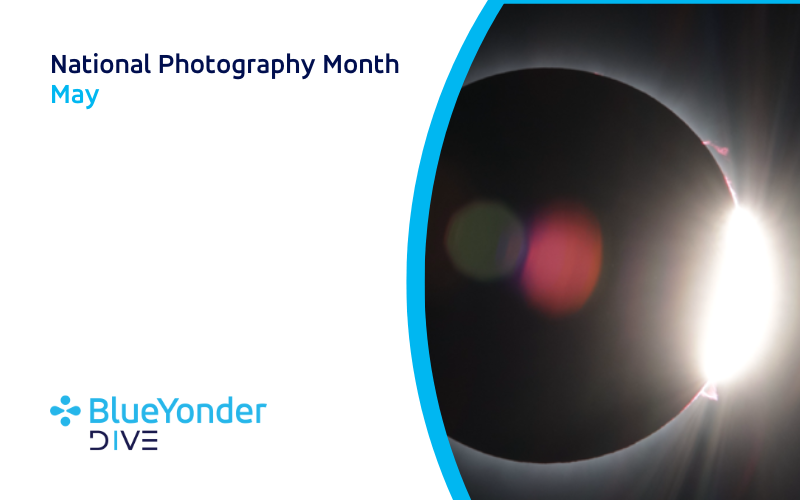Blue Yonder Associate Travels to Texas To Capture a Once-in-a-Lifetime Solar Eclipse
May is National Photography Month and is dedicated to learning about the art and mastering the various techniques. Today, we all have cameras in our hands via our smartphones so everyone is considered an amateur photographer. But those who are professionals are dedicated to the art and seek out that once-in-a-lifetime, perfect shot. Blue Yonder associate Kevin O’Donnell recently went in search of this photo during the recent solar eclipse in North America. He shares his story with our readers here.
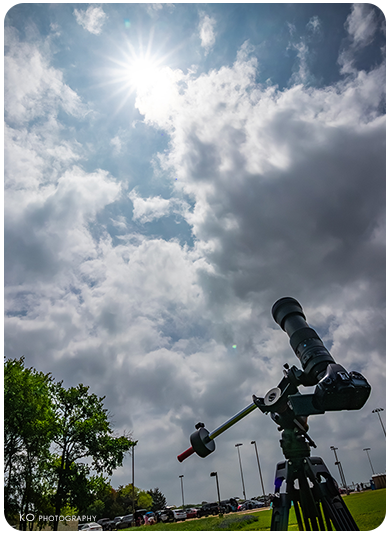
“Once-in-a-lifetime” is a phrase used often in pop culture. When it comes to a total solar eclipse crossing the U.S., this phrase is justifiably warranted. The 2024 North American Solar Eclipse on April 8, 2024, was heavily hyped due to the number of major cities in its path including Dallas, Indianapolis, and Cleveland. And also because the next solar eclipse crisscrossing the U.S. won’t occur again for over 20 years in 2045!
The previous one in 2017 also attracted faithful followers called “eclipse chasers,” but totality only occurred in mostly rural areas and the time of totality was half of this year’s eclipse. Those who witnessed the event in 2017, longed for another chance to see this life-changing moment again.
A solar eclipse occurs exclusively during a new moon and is only possible because the moon is coincidentally 400 times smaller than the sun, but also 400 times closer to earth. Since there is variation in our distance to the moon at different times of the year, even if this alignment occurs, sometimes we are only treated to an annular solar eclipse, also known as “The Ring of Fire,” where the moon doesn’t fully block out the sun. One of these occurred just last October touching some of the same cities in 2024’s totality path, an extra treat for locals.
Though solar eclipses do occur worldwide every few years, many of the paths take place over open ocean or are located too far for most to travel easily. Adding to these obstacles, the path of totality can be as narrow as one-mile wide (1912), can last for as little as 0.3 seconds (1948), or bad weather can make viewing impossible during the long-awaited moment.
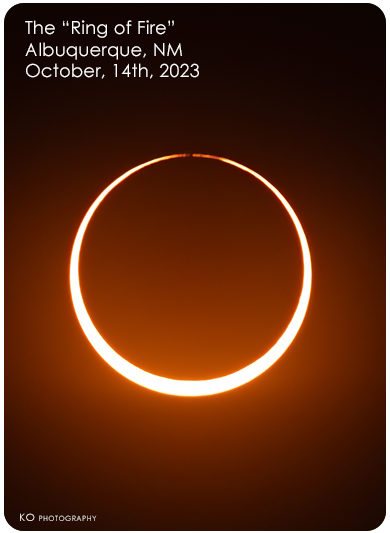
With a 122 mile wide path of totality and over 4 minutes of darkness, 2024’s was set up to be something special.
So what is totality? As most eclipse chasers will tell you, totality versus a partial eclipse is the difference between night and day! Even 99% is nothing like 100%. Though the temperature will drop and the sky becomes a bit dimmer, similar to wearing polarized sunglasses, the bright sun will still be visible at 99% and always requires special eye protection to view.
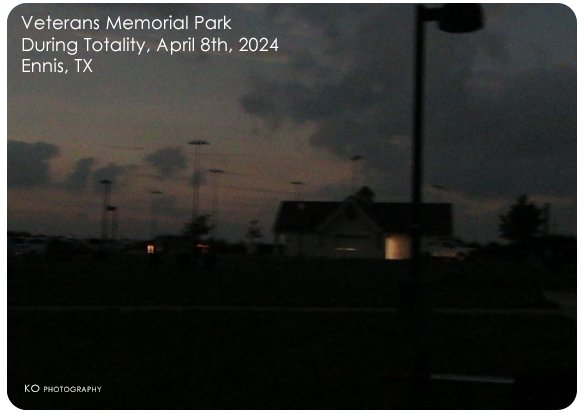
However, during 100% totality, the sky turns dark enough to see planets and stars, you can safely look directly at the sun, witness colorful prominences or flares with no special equipment, and hear crickets chirping and birds go quiet, apparently confused by the sudden shift to night. Sensor-operated streetlights illuminate, and in all directions on the horizon, a view reminiscent of dusk exists without any apparent sunset location.
In addition, if you are lucky, for just a moment, you can witness the shadow of the moon racing toward you at 1,500 miles an hour, a breathtaking sight. Now it is safe to take off your eclipse glasses and witness a dark hole in the sky with a rim of bright light around it. The clarity of viewing it in-person is unmatched by any camera equipment possible and if you are among other spectators, a roar of applause and emotion comes over the crowd. Having witnessed two of these now, I have heard screaming, cheering, crying, and vocal expressions of disbelief. It is a truly moving experience.
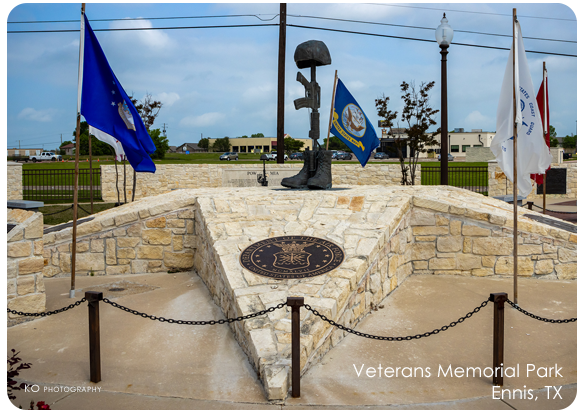
So what was my experience this time? Well, it almost didn’t happen. I chose Dallas over a year before because there are frequent flights to and from Phoenix, there are hundreds of hotels to choose from, and according to weather models, it was one of dryer spots along the totality path that started below Mexico and crossed all the way north to Ontario, Canada. However, the forecast for the actual day wasn’t great with lots of clouds in the forecast.
On eclipse day, Monday, April 8, joined by my family, I traveled east from Dallas to reach the center point of totality, assuring the longest darkness.
As we traveled to the small town of Sulfur Springs, where eclipse festivals were already under way, I had a bad feeling about the skies I was seeing. The cloud cover was getting so thick I couldn’t even see the sun.
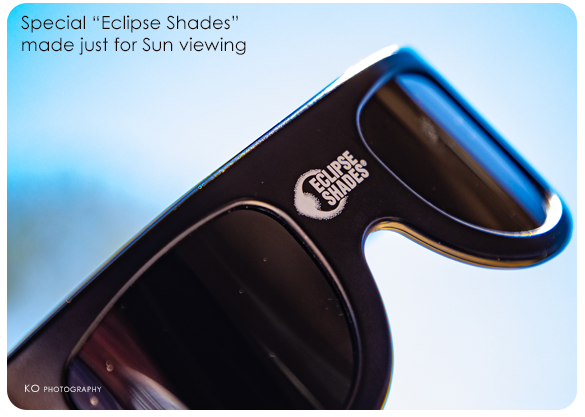
About halfway there, I made the decision to turn south instead and head to Ennis, Texas, also in the center point of totality. As we approached, the clouds started to open up and we even got some moments of sunshine on the highway. As we entered town, festivities were underway here too, as they were in most towns along the center point. T-shirts, eclipse glasses and banners all around main street invited eclipse chasers like us to their town of 20,000.
I was hoping for an open space to set up my cameras, bulging out of my carryon bags, and spotted Veterans Memorial Park. It was the perfect spot. Paved, plenty of parking, other astro enthusiasts setting up their gear, and most importantly, bathrooms!
One added surprise here were the beautiful blooming flowers known as Blue Bonnets, something we don’t have in Arizona. So among the Blue Bonnets, grass and small grove of trees, I set up my two cameras, lenses and star tracker, which is a necessity if you want to keep the sun in your shot throughout the day as we are on a spinning sphere after all. My latest setup now includes an 840mm lens, 4K video DSLR camera, and a high quality, threaded sun filter.

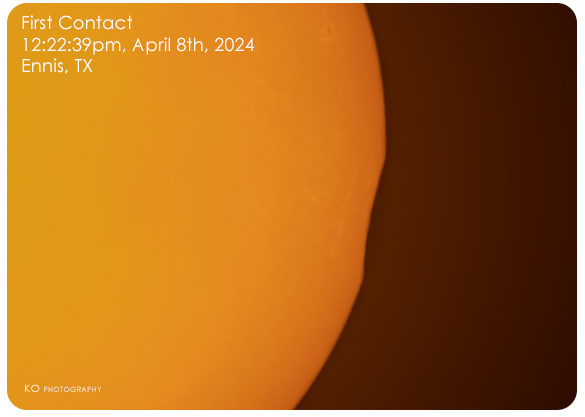
First contact, the moment the otherwise invisible new moon first takes a bite out of the sun, occurred at 12:22:39 p.m. The science of the times is extremely precise with GPS technology. I took photos and videos over the next hour and twenty minutes until totality was about to begin at 1:39:58 p.m.
Knowing the big show was about to start, I removed my sun filter and started rolling video. I knew I would want both photos and video, but remember the moments happen very quickly right at totality. The “Diamond Ring” occurs, which is when the sun sneaks behind the moon while still blazing a large orb of light, reminiscent of a diamond ring. Then “Baily’s Beads” occurs, where little rays of light pierce through the mountains and valleys of our crater-covered moon.
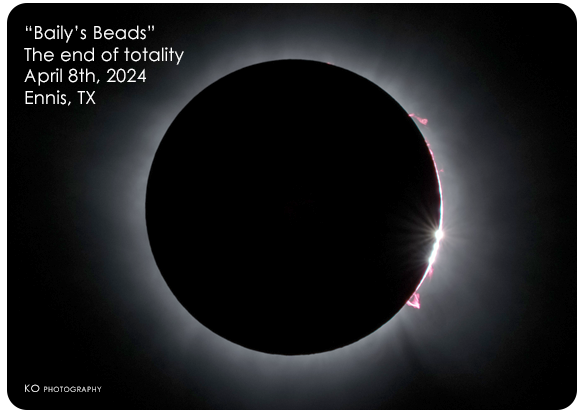
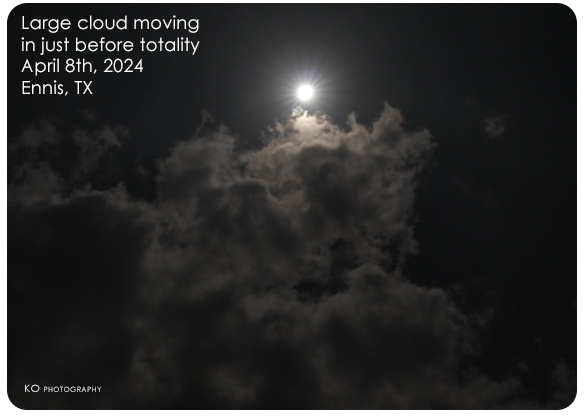
For just a moment, my biggest fear did start to come true. After hours of mostly clear skies, a large cloud started to cover the sun right at the moment of totality. The crowd gasped. Many spoke out loud, “NO!”, but it had started. Despite the cloud, the whole area went dark, the applause began and my cameras were now capturing something unique.
I was seeing and photographing the light beams surrounding the moon whisking in and out of fast-moving clouds. Luckily, this eclipse was very long. So long, that with over 2 minutes left, the cloud moved past and we had a crystal clear view of the eclipse. The crowd cheered and I began snapping photos and videos at different exposures and speeds. The adrenaline soured through me to watch it, enjoy it, but also get the perfect shot as a photographer. It can be very overwhelming.
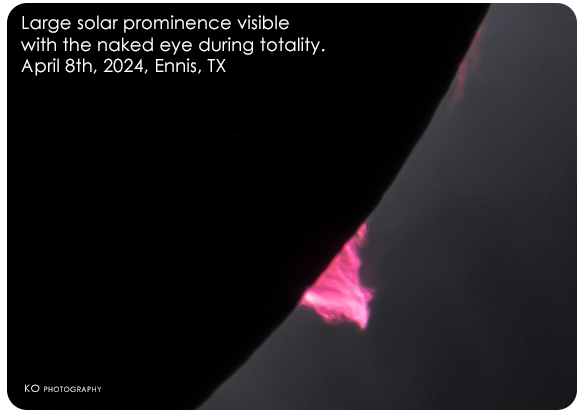
Now that everything was just working perfectly and I didn’t have to touch any equipment again, I witnessed the last moments when “Bailey’s Beads” reappear, followed by the “Diamond Ring.” We were soon back to wearing eye protection if we wanted to look up again as 1:44:22 p.m. came quickly.
The crowd cheered again like the encore of a rock concert and my wife uttered the memorable phrase, “I just wish it would last.” I think we all thought that in this moment. Until 2045…
About the Author:
Kevin O’Donnell is a Senior Marketing Manager based in Scottsdale, Arizona. His astrophotography has been published by NASA, Arizona Highways Magazine, Lowell Observatory, Space.com and several Phoenix TV stations. He has also been a guest panelist several times for Arizona State University’s School of Earth and Space Exploration during community outreach events on astronomy. His Instagram account is @theskydetective

